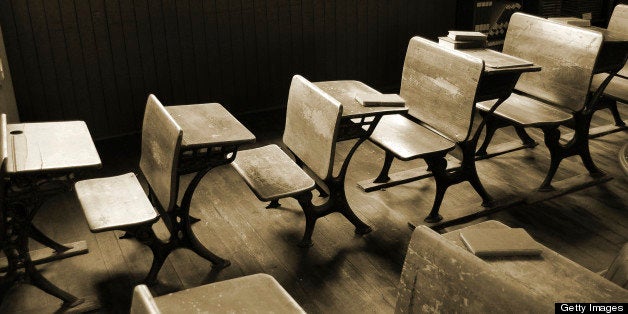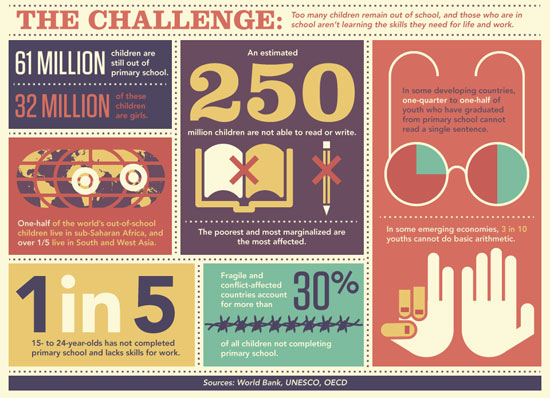
A recent World Bank survey showed education is a top priority for developing country governments and their citizens. The sobering reality is that in some parts of the developing world as many as half of the children graduating from primary school can't read. One in five young people between the ages of 15 and 24 have not even completed primary school and lack basic skills to get a job.
This learning crisis poses one of the greatest obstacles to development. The United Nations estimates that some 171 million people could lift themselves out of poverty if all students in poor countries acquired basic reading skills. Improving literacy and numeracy can boost annual economic growth by 2 percent in low-income countries. When girls get to go to school, the impact is even more profound. Better access to education for girls since 1970 has prevented more than 4 million child deaths, and providing girls one extra year of education boosts eventual wages by 10-20 percent.
The world has seen great progress in getting children into school over the past decade. Yet 61 million children are still out of class -- that's 61 million too many. At the World Bank, we've been stepping up our efforts to achieve the Millennium Development Goal to get all children in school by 2015. As just one example, over the past decade, the Bank has helped more than 7 million Afghani children enter school, including 1 million girls -- a five-fold increase.
But reaching the classroom is only the first step. Every child should have the opportunity not only to go to school but to acquire the knowledge and skills she needs to lead a healthy, productive life, care for herself and her family, and become an empowered citizen. At the national level, countries need workforces with the skills and competencies required to keep farms and factories producing, create jobs, fuel innovation and competitiveness, and drive economic growth that benefits everyone.
- Invest early. Ninety percent of brain development occurs before age five. The lack of proper nutrition or stimulation in the earliest years -- particularly pregnancy to age two -- has lifelong negative impacts on a child's ability to learn, grow and contribute to society.
- Support the most disadvantaged children, especially girls. The greatest learning gap occurs among children living in poverty, and girls face particular challenges in many countries. Targeted financial assistance can make the difference; cash transfers have helped almost 40,000 girls in Yemen go to school and learn.
- Make schooling count. Countries need to ensure that children acquire the basic skills necessary to continue learning by the time they complete primary education. To compete in today's dynamic global economy, employers need a workforce with adaptable skills. So our children need tools to become lifelong learners.
- Measure what kids learn. Every country should have a credible national or international assessment system in place to measure student learning at each level of education. Reliable learning data will shed light on where education resources are most needed and how to use those resources most effectively. The data and diagnostic reports from the Bank's Systems Approach for Better Education Results program will help countries put effective policies and systems in place to measure student performance. This will also enable parents and citizens to hold governments and schools accountable for results.
- Ensure resiliency. It's difficult, and sometimes impossible, for children to go to school and learn when they're surrounded by civil war or natural disasters. Such conditions mean destroyed classrooms, students forced out of school, disabilities, and fewer teachers. The Bank is helping countries build safety nets in Ethiopia, Brazil and elsewhere so that poor children can continue learning in times of crisis. And once the crisis has passed, education must be a fundamental element of the recovery and rebuilding process.
